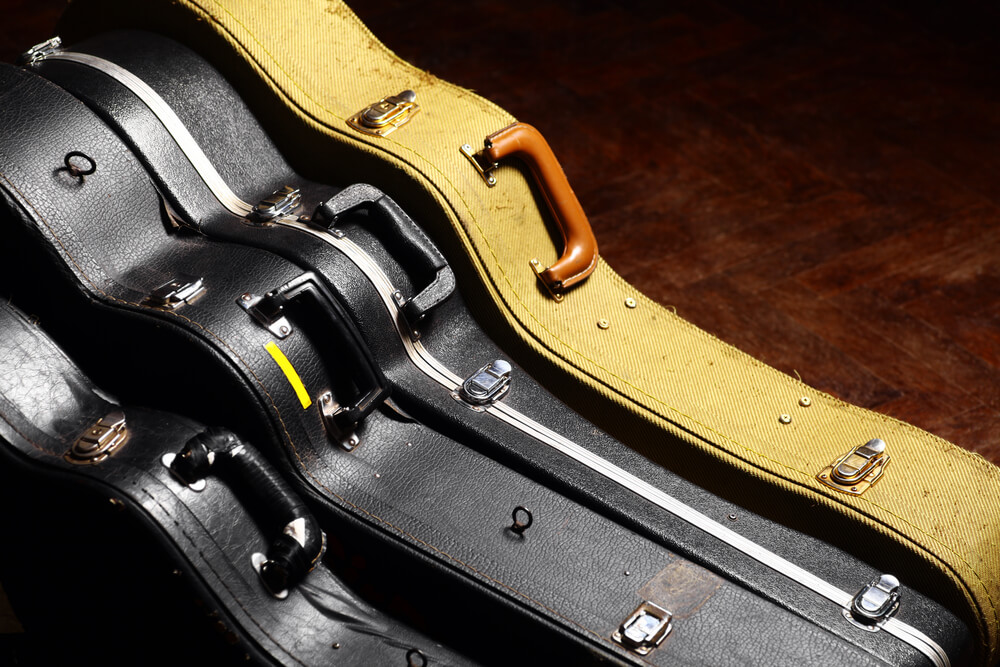Shipping an acoustic guitar can be a daunting task, especially if it’s your first time. As a musician who has gone through the process multiple times, I understand the importance of properly packing and preparing a guitar for shipping to ensure its safe arrival.
In this article, I’ll share my experience and guide you through the process of how to ship an acoustic guitar.
Properly packing your guitar is crucial in preventing any damage during transit. From choosing the right packaging materials to the proper positioning of the guitar within the box, these details make all the difference.
Additionally, selecting the appropriate shipping service and understanding their requirements is an essential part of the process.
Throughout this guide, I’ll offer tips, best practices, and frequently asked questions to help you navigate the world of shipping acoustic guitars with confidence.
Key Takeaways
- Proper packing is essential for protecting your guitar during shipping
- Choosing the right shipping service is key to a successful shipping experience
- Keep in mind common questions and concerns to ensure a smooth shipping process
How to Ship an Acoustic Guitar
Choosing a Suitable Case
When it comes to shipping my acoustic guitar, selecting the right case is crucial. A gig bag might be lightweight and portable, but it doesn’t offer enough protection during transit.
Instead, I opt for a hard-shell case or a hard case, as it provides better protection for the headstock, neck joint, tailpiece, and body of my guitar.
Loosening the Strings
Before placing my guitar in the case, I make sure to loosen the strings, as this prevents tension on the neck during transportation. I don’t completely remove the strings, but I do ensure they are slackened enough to prevent any unwanted stress on the frets and pickups.
Protection of Key Components
When packing my acoustic guitar, taking extra care to protect key components is essential. I start by wrapping the headstock and neck joint with bubble wrap and securing them with tape.
I also ensure the tailpiece and bridge are well-protected by adding layers of bubble wrap or newspaper around these areas.
Next, I focus on protecting the guitar’s body. I wrap the entire body using either bubble wrap, packing paper, or newspaper, making sure that all areas are covered, especially the fragile parts like the soundhole, bridge, and pickups.
Finally, I place my guitar in its hard case and fill any empty spaces with additional packing materials, such as crumpled newspaper, to ensure the guitar remains secure and doesn’t move around during shipping.
By carefully selecting an appropriate case, loosening the strings, and protecting the key components of my acoustic guitar, I can confidently ship my instrument without worry.
Proper packing is essential in ensuring the safe arrival of my guitar at its destination.
Prepping the Shipping Box
Choosing a Shipping Box
When I prepare to ship an acoustic guitar, I always start by selecting a sturdy shipping box that is slightly larger than the guitar’s dimensions. This allows me to add extra padding to protect the instrument during transport.
I prefer double-walled corrugated boxes for added thickness and strength. Once I’ve chosen the right box, I make sure it is free from any punctures or tears before sealing the bottom flaps securely using heavy-duty packing tape.
Internal Securing of the Guitar
To keep my guitar safe inside the box, I use a combination of foam sheets, bubble wrap, and packing peanuts for maximum protection.
Here’s how I do it:
- Wrapping the guitar: First, I cover the entire surface of the guitar with a thin layer of foam sheets to prevent scratches. Then, I wrap it generously with bubble wrap, paying special attention to the neck, headstock, and bridge areas. Using packing tape, I secure the wrapping in place, making sure not to apply tape directly onto the guitar’s surface.
- Layering the box: Before placing the guitar into the box, I lay a layer of packing peanuts at the bottom to create a cushioned base.
- Positioning the guitar: I gently lower the wrapped guitar into the box, ensuring it is centered with an even gap around all sides. This space will provide room for more packing materials, helping to prevent movement during shipment.
- Adding more padding: I fill any remaining gaps between the guitar and the box walls using more packing peanuts. For extra protection, I insert additional pieces of bubble wrap in strategic locations like around the headstock, which is a particularly vulnerable area.
- Final check: Once I’m satisfied with the packing, I gently shake the box to make sure the guitar is stable and there’s no shifting inside. If necessary, I add more packing materials to ensure a snug fit.
After completing these steps, my guitar is ready to be sealed in the shipping box and sent on its way.
Shipping Process and Considerations
Choosing the Shipping Service
When it comes to shipping an acoustic guitar, I have multiple shipping services to choose from, such as UPS, FedEx, and other courier services.
I’ll consider factors like cost, shipping speed, and the reputation of the courier when making my choice. Comparing their prices, delivery times, and reviews online can help me find the most suitable service for my needs.
Applying the Shipping Label
Once I’ve chosen a shipping service, it’s crucial to correctly apply the shipping label. Accurate and legible labels are vital to ensure my guitar reaches its destination.
I’ll print the shipping label provided by the courier and attach it to the outside of the guitar case or its packaging. I’ll make sure it’s secure and won’t be easily torn or damaged in transit.
Insurance Considerations
Insurance is another factor to consider when shipping an acoustic guitar. Due to the delicate nature of the instrument, I’ll look into the insurance options offered by the shipping service I choose.
I’ll evaluate the cost of insurance against the value of my guitar and decide on the appropriate coverage. This will give me peace of mind knowing my guitar is protected during shipping.
Frequently Asked Questions
What is the best way to pack an acoustic guitar for shipping?
When I pack my acoustic guitar for shipping, I start by loosening the strings a bit to relieve tension. Then, I place the guitar in a hard case with enough padding on all sides.
If I don’t have a hard case, I use bubble wrap or foam for added protection. It’s essential to fill any empty spaces inside the box with packing material like newspaper or bubble wrap to restrict movement during transit.
What are the costs associated with shipping an acoustic guitar?
Personally, the cost of shipping my acoustic guitar depends on factors such as the packaged guitar’s size, weight, and destination. Carriers like UPS, FedEx, and USPS each have their pricing models, which may vary.
Additional charges could apply for insurance, declared values, or expedited shipping services. To get the most accurate pricing, I check with the specific carrier or use their online shipping calculator.
Which carrier should I choose for shipping a guitar?
When I need to ship my acoustic guitar, I rely on carriers like UPS, FedEx, or USPS. Each offers various shipping options with different transit times and prices. My choice depends on factors such as cost, delivery time, and tracking capabilities.
I also consider the buyer’s preference and location when selecting the carrier.
How can I ensure the safe delivery of my acoustic guitar?
To provide a safe delivery for my acoustic guitar, I make sure to pack it securely with necessary padding. I also recommend purchasing insurance from the carrier to cover any potential damages or losses during transit.
Further, I request a signature confirmation upon delivery to ensure the guitar reaches the intended recipient.
Can I ship a guitar internationally?
Yes, I can ship my acoustic guitar internationally. I should be aware that international shipping could involve customs fees, taxes, or duties, which the recipient might need to cover upon its arrival.
Some countries might also have regulations or restrictions on certain materials used in guitars, such as wood species or animal products.
To avoid complications, I researched the destination country’s regulations and chose a reliable carrier with transparent international shipping policies.
What is the cheapest shipping option for a guitar?
The cheapest shipping option for my acoustic guitar could vary depending on factors like the package size, weight, and destination. One tip I can share is to compare the prices and services of different carriers, such as UPS, FedEx, or USPS.
Another way to save money is to provide my own packing materials instead of purchasing them from the carrier. Choosing standard shipping rather than expedited services and avoiding additional fees also helps keep the cost down.






